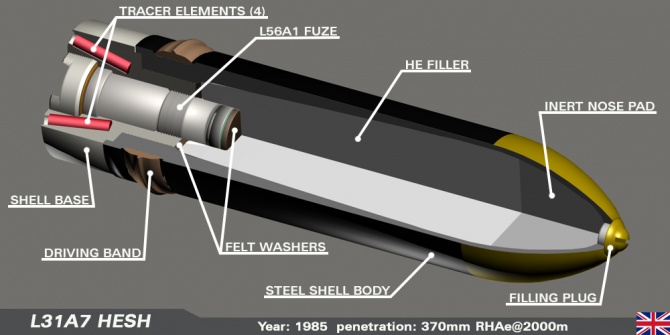L31
Statistics
Maximum Range: 4000m
Armour Penetration: 370mm RHAe (HE)
Muzzle Velocity: 670m/s
Date Fielded: 1985
General
The L31 is a British HESH (High Explosive Squash-Head) round developed by Royal Ordnance in the early 1960's for the L11 series of 120mm rifled tank guns. It consists of a thin metal shell filled with a plastic explosive (4.1kg Composition B: RDX-TNT-Wax) capped with a nose pad of inert composition. Fitted in the round's base is a L56A1 fuze assembly and 4 L7A1 tracers.
A driving factor behind the continued use of rifled cannon on British tanks such as the Chieftain and Challenger 2, the L31 HESH round offers a high degree of flexibility compared to contemporary HEAT projectiles. HESH is very effective against buildings, fortifications, IFV/APCs, light vehicles, and troop concentrations, but is less effective against spaced, laminated, and NERA/ERA armour arrays. Some of these shortcomings are mitigated by the round's low muzzle velocity and arcing trajectory, allowing it to strike the thinly armoured top portions of tank targets, but these same qualities make it very difficult to strike moving targets at long range.
Although no longer produced in the UK, Great Britain retains large stockpiles of L31 HESH and the round continues use with Britain, Iran, Jordan, and Oman.
